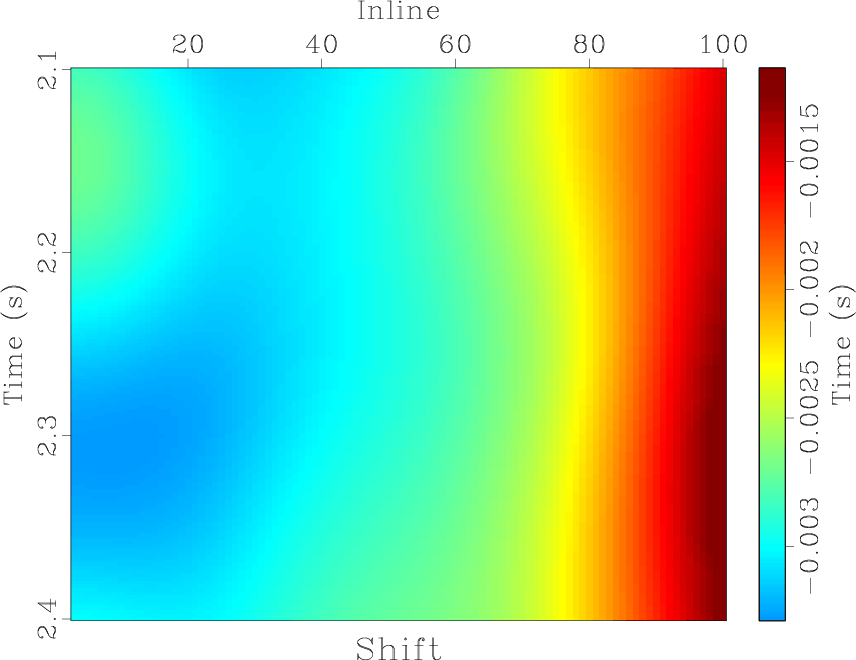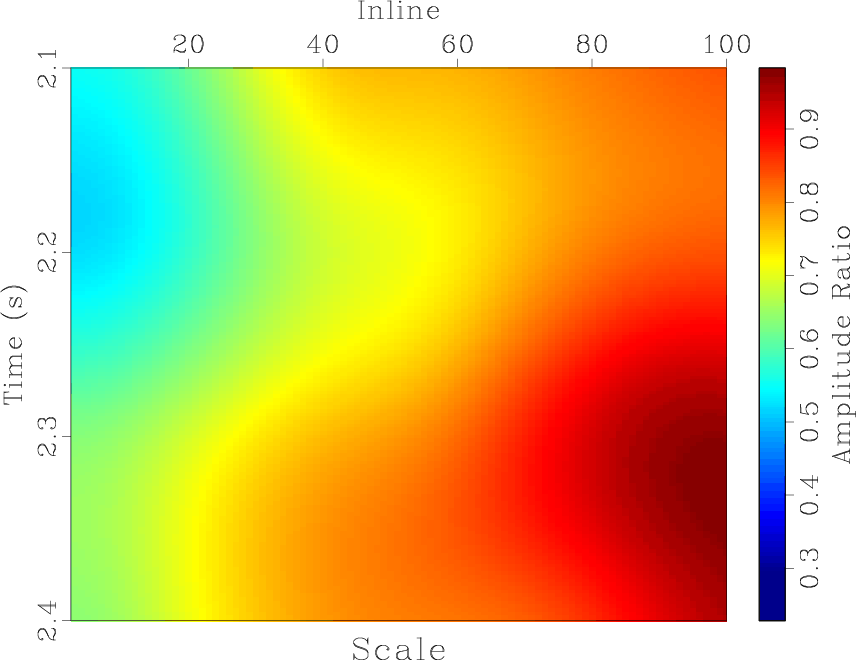|
|
|
|
Seismic time-lapse image registration using amplitude-adjusted plane-wave destruction |






|
|---|
|
sshift5,sscale5,interleave0,interleave1,res1,res2
Figure 2. Image registration applied to time-lapse data from Cranfield CO |
|
|
We then apply amplitude-adjusted plane-wave destruction
to time-lapse field data from the Cranfield CO![]() sequestration experiment (Zhang et al., 2014,2013). This dataset consists of a base and monitor image.
sequestration experiment (Zhang et al., 2014,2013). This dataset consists of a base and monitor image.
Plane-wave destruction is particularly effective for measuring very small shifts. Furthermore, rescaling the monitor image to match the amplitude of the base images allows local shifts to be measured even more precisely. Upon applying the algorithm, high resolution shifting (Figure 2a) and scaling (Figure 2b) functions are computed and applied to the previously shifted image to improve the match between the base and monitor image.
To display the results, we interleave a slice of the base cube with slices of the unaltered monitor cube (Figure 2c) and the shifted and scaled monitor cube (Figure 2d) and see that reflections become aligned effectively after applying the proposed algorithm, indicating that the shifting and scaling functions have been properly predicted.
We finally compute the time-lapse difference (Figure 2e) and the registered difference (Figure 2f). Coherent signal can be interpreted throughout the time-lapse difference due to
the time shift between the images. Upon registering the images, the difference outside of the reservoir interval reduces to noise. The signal between 2.2 and 2.3 s corresponds to the reservoir where
CO![]() injection took place between the surveys.
injection took place between the surveys.
|
|
|
|
Seismic time-lapse image registration using amplitude-adjusted plane-wave destruction |